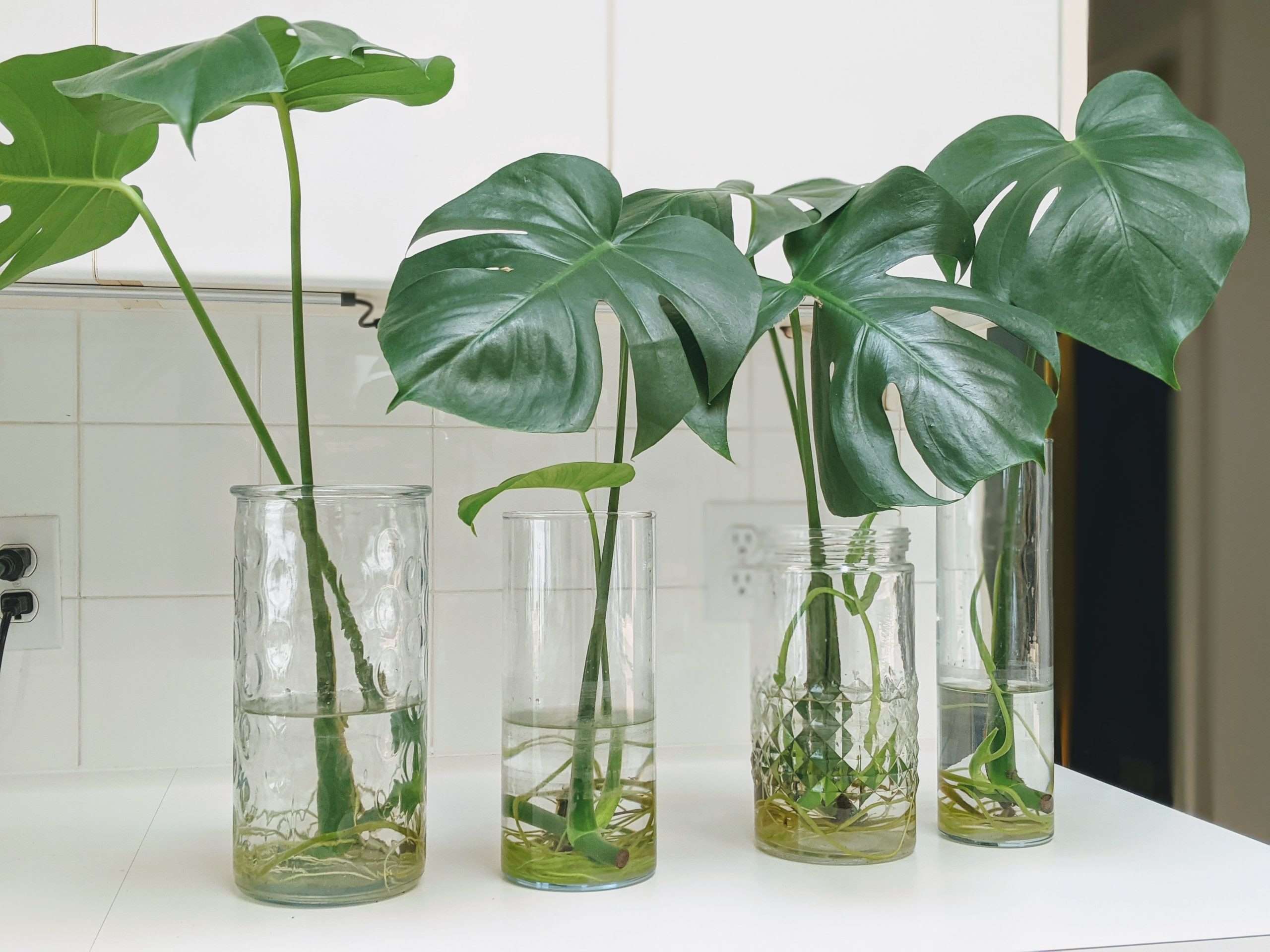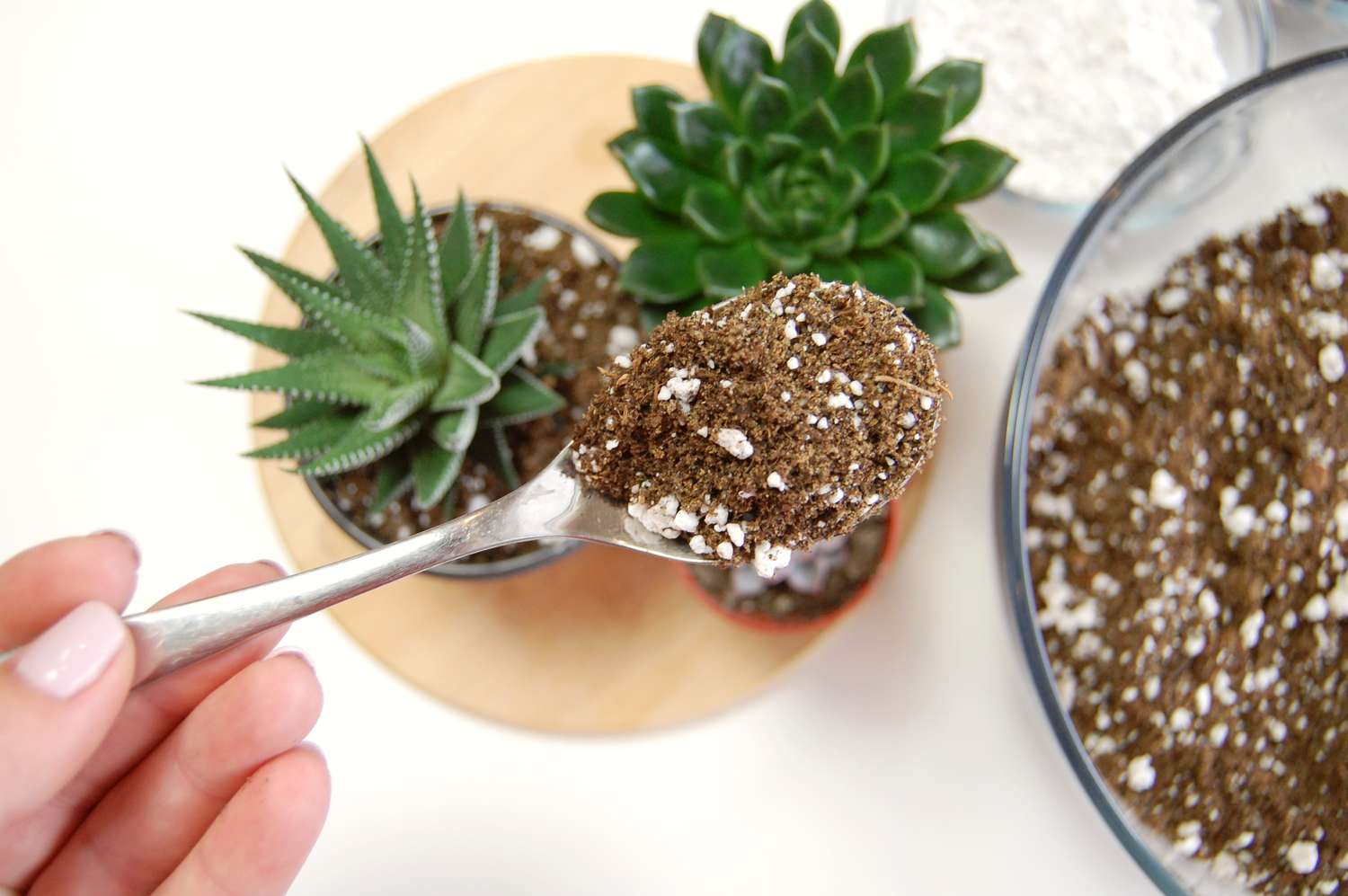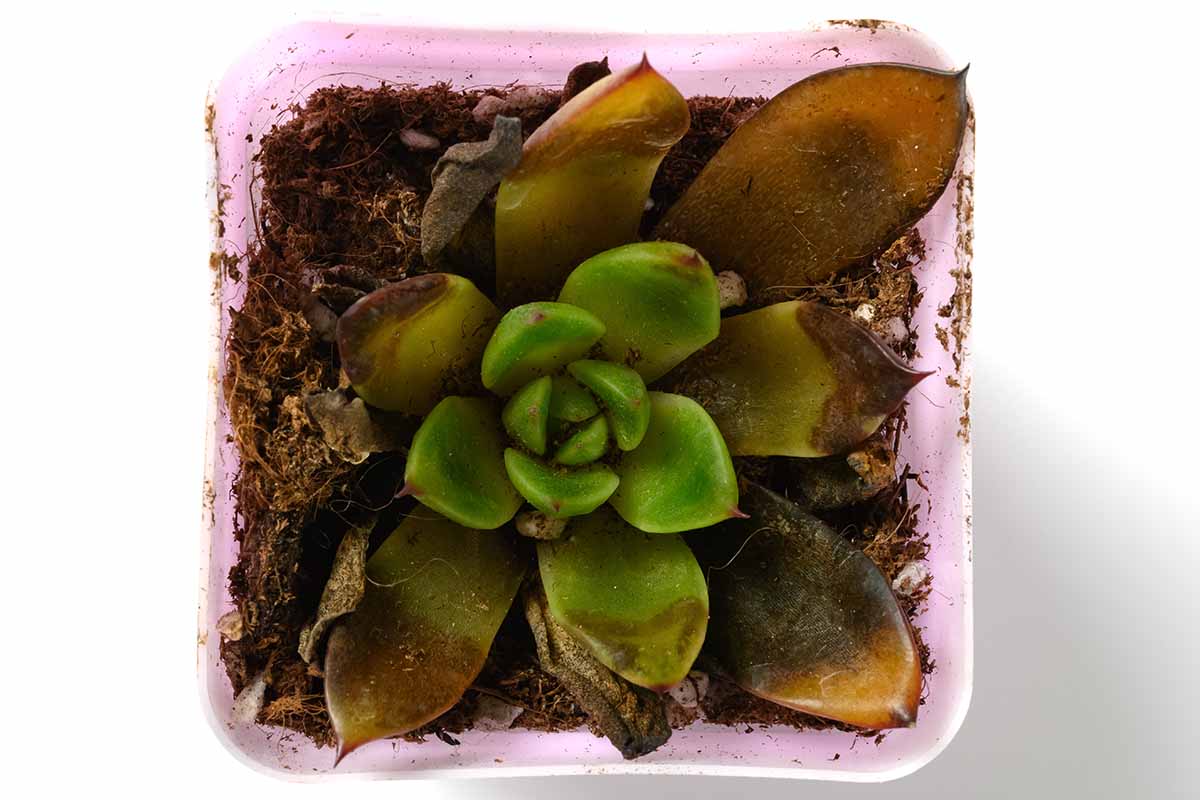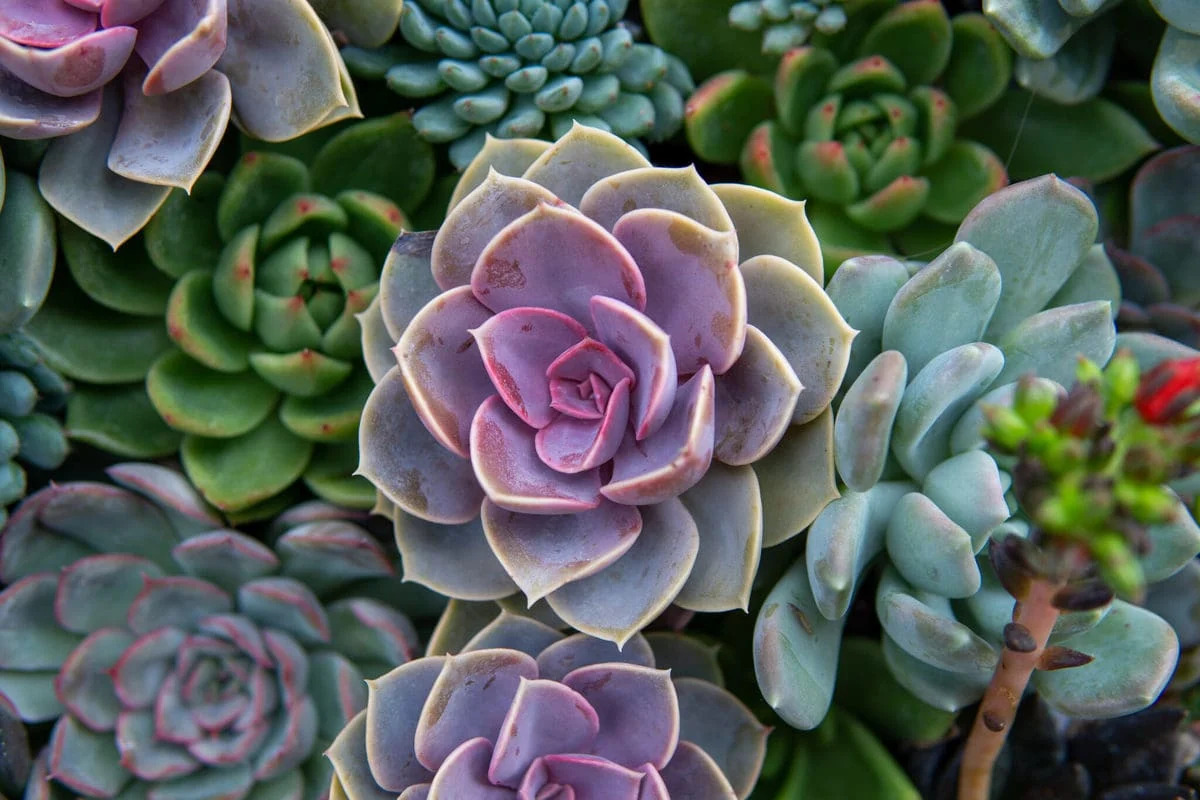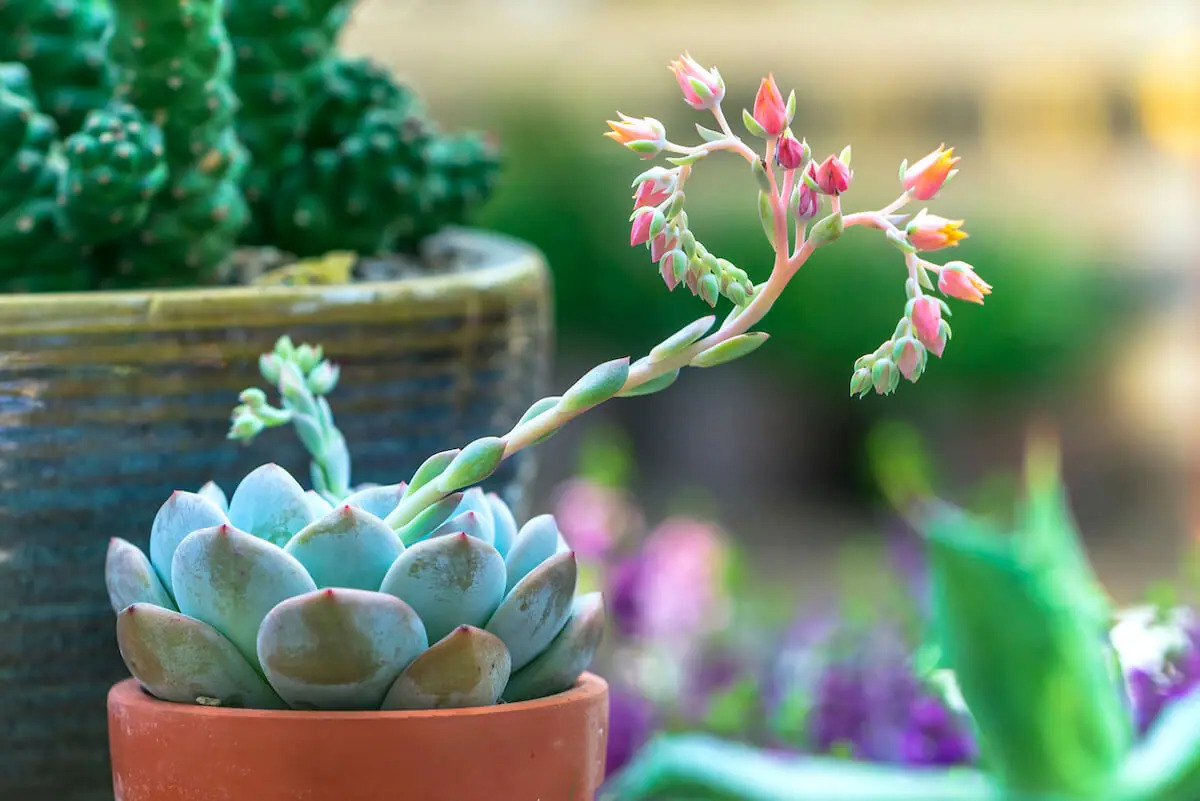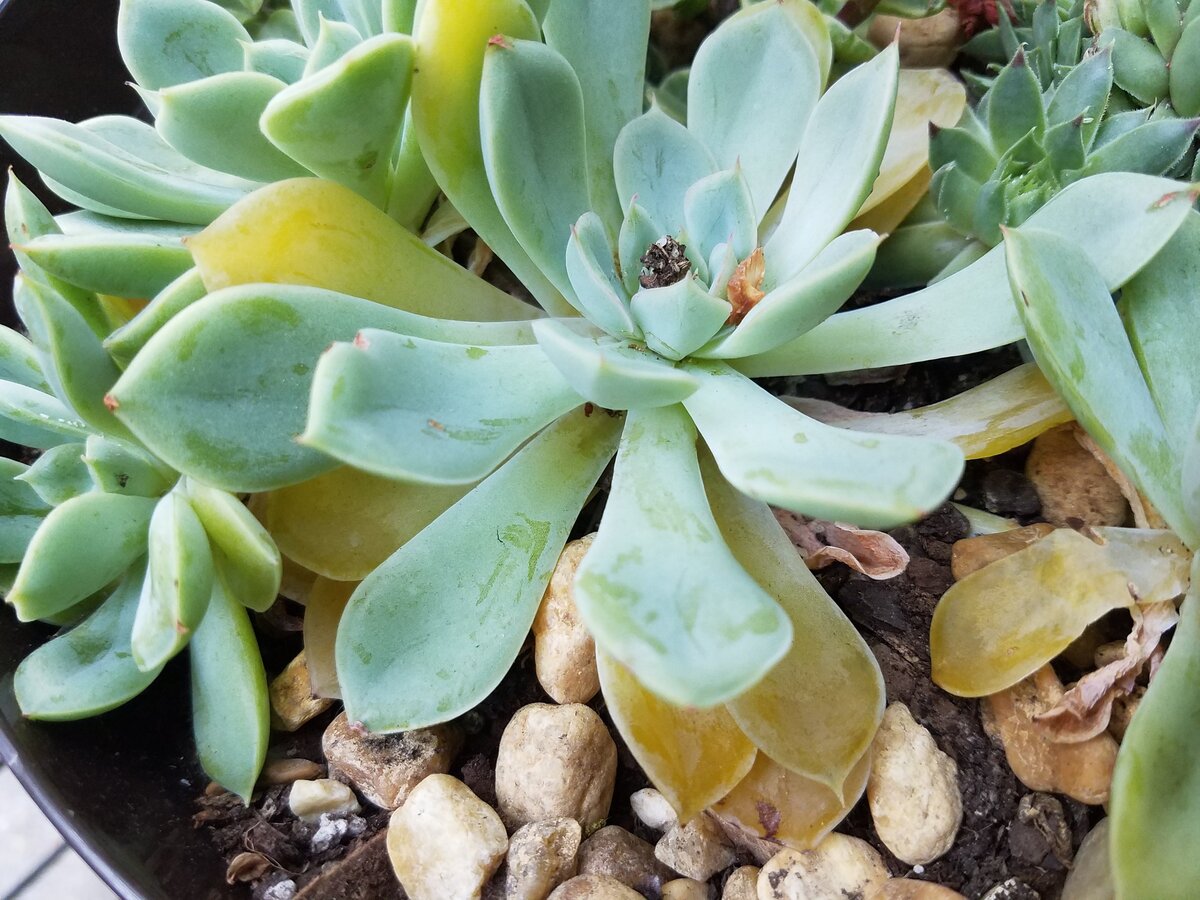Home>Types of Gardening>Ornamental Gardening>What To Do With Aerial Roots On Succulents
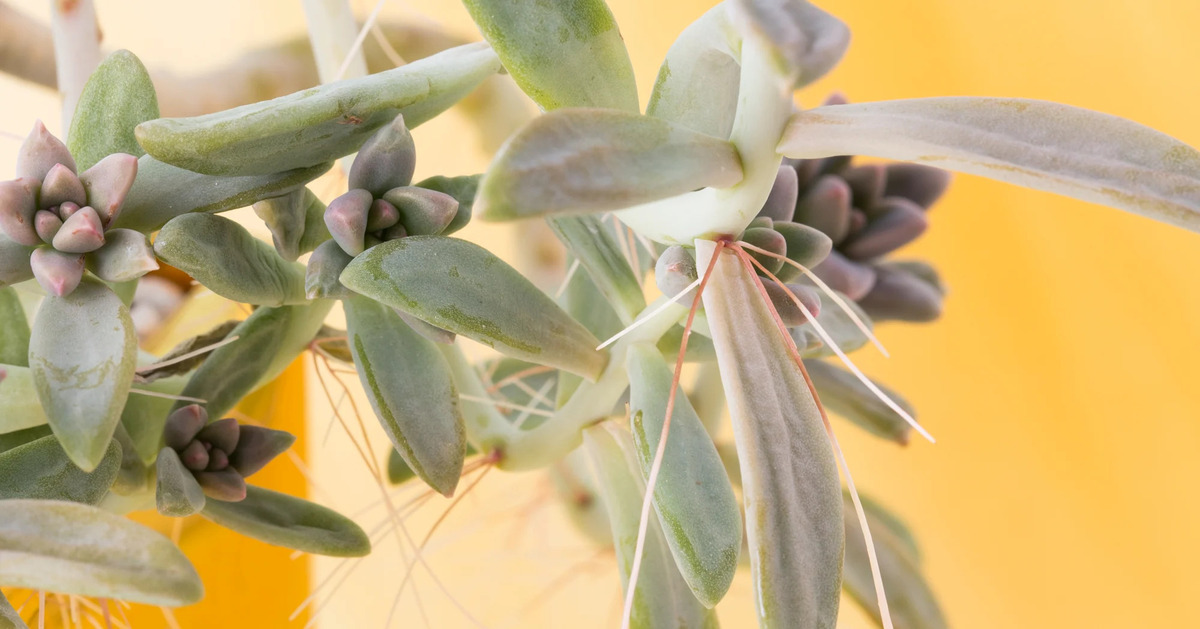

Ornamental Gardening
What To Do With Aerial Roots On Succulents
Modified: January 22, 2024
Discover how to manage and care for aerial roots on succulents to enhance their ornamental appeal with our expert tips and advice on ornamental gardening.
(Many of the links in this article redirect to a specific reviewed product. Your purchase of these products through affiliate links helps to generate commission for Chicagolandgardening.com, at no extra cost. Learn more)
Table of Contents
- Introduction
- Definition of Aerial Roots on Succulents
- The Purpose of Aerial Roots
- Common Misconceptions About Aerial Roots
- The Benefits of Leaving Aerial Roots on Succulents
- How to Properly Care for Aerial Roots
- Mistakes to Avoid When Handling Aerial Roots
- Pruning Aerial Roots on Succulents
- Propagation Methods Using Aerial Roots
- Conclusion
Introduction
Succulents are beloved for their unique and captivating appearance, with their diverse shapes and colors making them a popular choice for ornamental gardening. Aerial roots are one of the fascinating features that can be found on some succulent varieties. These roots have led to much curiosity and debate among gardening enthusiasts.
Aerial roots, also known as adventitious roots, are above-ground roots that emerge from the stem or leaves of a plant. Unlike normal roots that grow underground, aerial roots serve a different purpose and require special care to ensure the health and vitality of the plant.
In this article, we will delve into the world of aerial roots on succulents, exploring their purpose, debunking common misconceptions, and providing guidance on how to properly care for and prune them. We will also explore the unique opportunities that aerial roots present for propagating succulents.
Whether you are a seasoned succulent enthusiast or just starting your ornamental gardening journey, understanding and taking proper care of aerial roots will contribute to the overall health and beauty of your succulent collection.
Definition of Aerial Roots on Succulents
Aerial roots are specialized structures that can be found on certain succulent plants. Unlike traditional underground roots that primarily serve to anchor the plant and absorb water and nutrients from the soil, aerial roots have a different function and appearance.
These roots, also referred to as adventitious roots, emerge from the stem or leaves of the succulent rather than growing from the base of the plant. They can appear as thin strands, thick strands, or even as fuzzy attachments, depending on the species.
Aerial roots are often seen in epiphytic succulents, which naturally grow on trees or other above-ground structures. These roots act as an anchor, attaching the plant to its host and providing additional support. They are able to absorb moisture and nutrients from the air rather than relying solely on the ground for sustenance.
It’s important to note that not all succulents have aerial roots. Certain species, such as air plants (Tillandsia spp.) and some orchids (Epidendrum spp.), are renowned for their impressive display of aerial roots. However, other popular succulents, such as Echeveria and Haworthia, rarely exhibit significant aerial root growth.
To fully understand and appreciate the role of aerial roots in succulents, it is necessary to explore their purpose and benefits.
The Purpose of Aerial Roots
Aerial roots serve a vital purpose in the life of a succulent. While traditional roots primarily function to absorb water and nutrients, aerial roots have evolved to fulfill different roles, especially in plants that grow epiphytically. Here are some key purposes of aerial roots on succulents:
- Attachment and Support: One of the primary functions of aerial roots is to anchor the succulent to its host or surroundings. In the case of epiphytic succulents, these roots attach to trees, rocks, or other above-ground structures, providing stability and support to the plant. This is crucial for plants that naturally grow off the ground and need to secure themselves in their unique habitats.
- Water Absorption: Aerial roots have the remarkable ability to absorb moisture directly from the air. This adaptation is especially advantageous for succulents growing in arid or semi-arid environments, where access to water in the soil may be limited. By absorbing moisture from the surrounding atmosphere, succulents with aerial roots can supplement their water intake and increase their chances of survival.
- Nutrient Uptake: In addition to water absorption, aerial roots can also capture and assimilate nutrients present in the air. They have specialized tissues that can absorb essential elements, such as nitrogen and trace minerals, which are otherwise scarce in the environment. This unique adaptation enables succulents to thrive in nutrient-deficient habitats.
- Air Circulation: Aerial roots can play a role in improving air circulation around the succulent. By extending above the ground, these roots allow better airflow, preventing excessive moisture buildup and reducing the risk of fungal diseases. Adequate air circulation also helps regulate temperature and minimize the chances of heat stress.
- Propagation: Aerial roots offer opportunities for succulent propagation. These roots can produce adventitious buds or shoots, which can develop into new plants. By properly caring for and manipulating aerial roots, succulent enthusiasts can use them as a convenient method of expansion and multiplication.
Understanding the purpose of aerial roots is crucial for providing appropriate care and ensuring the well-being of your succulents. However, there are some common misconceptions surrounding aerial roots that need to be addressed.
Common Misconceptions About Aerial Roots
Aerial roots on succulents have sparked curiosity and led to various misconceptions among gardening enthusiasts. To fully understand and appreciate the role of these unique roots, it’s important to debunk these misconceptions. Here are some common misunderstandings about aerial roots:
- Aerial Roots are Harmful: One of the misconceptions about aerial roots is that they are harmful to the plant and should be removed. However, this is not true. Aerial roots play important roles in the overall health and well-being of succulents and are not detrimental to their growth.
- Aerial Roots Steal Nutrients from the Plant: Some gardeners believe that aerial roots compete with the regular roots for nutrients, leading to a weaker and less healthy plant. In reality, aerial roots have specialized functions and do not interfere with the nutrient uptake by the regular roots. They have adapted to absorb nutrients efficiently from the air and coexist harmoniously with the rest of the plant.
- Aerial Roots Require Soil for Growth: While regular roots rely on soil for growth and obtaining water and nutrients, aerial roots do not necessarily need soil. They are designed to absorb moisture and nutrients from the air and can thrive in environments where traditional soil-based roots would struggle.
- Aerial Roots Indicate Poor Plant Health: It’s a common misconception that the presence of aerial roots signifies an unhealthy or stressed plant. However, aerial roots are a natural adaptation to certain environments and are often found on perfectly healthy succulents. They are not an indication of poor plant health but rather a unique and fascinating characteristic.
- Aerial Roots Can’t be Pruned: Some gardeners believe that aerial roots cannot or should not be pruned. While it’s true that aerial roots serve important functions for the plant, careful pruning can be done if necessary. However, proper pruning techniques should be followed to avoid damaging the plant or interfering with its natural processes.
By dispelling these misconceptions, we can better understand and appreciate the true nature and benefits of aerial roots on succulents. In the next section, we will explore the advantages of leaving aerial roots intact and provide guidance on how to properly care for them.
The Benefits of Leaving Aerial Roots on Succulents
Leaving aerial roots on succulents can provide several advantages for the plant’s overall health and well-being. While it may be tempting to remove these unique features, understanding their benefits can help you make informed decisions about their care. Here are some key benefits of leaving aerial roots intact:
- Enhanced Water Absorption: Aerial roots have the ability to absorb moisture directly from the air, allowing the plant to supplement its water intake. This can be especially beneficial in arid or dry environments where access to water in the soil may be limited. By having aerial roots, succulents can increase their capacity to absorb water and reduce their dependency on root systems alone.
- Improved Nutrient Uptake: Aerial roots can absorb trace elements and nutrients, such as nitrogen, from the air. This additional source of nutrients is especially significant in regions with nutrient-deficient soils. With aerial roots intact, succulents have a better chance of accessing essential elements that may not be readily available in their surrounding environment.
- Stabilization and Support: Aerial roots play an important role in stabilizing and supporting the succulent plant. In cases where succulents grow epiphytically, these roots anchor the plant to its host, providing stability and preventing it from falling or being dislodged. By leaving aerial roots intact, you ensure that your succulent has the necessary support to thrive in its unique habitat.
- Fascinating Aesthetics: Aerial roots can add an intriguing and visually appealing aspect to the overall aesthetic of succulent plants. The unique shapes, textures, and sizes of these roots create an interesting contrast to the foliage and can be admired as part of the plant’s natural beauty. Leaving them intact can enhance the uniqueness and attractiveness of your succulent collection.
- Potential Propagation Opportunities: Aerial roots offer exciting possibilities for succulent propagation. These roots can produce adventitious buds or shoots, which can be carefully nurtured to grow into new plants. By allowing aerial roots to develop and mature, you can take advantage of this natural propagation method to expand your succulent collection.
By recognizing the benefits of leaving aerial roots on succulents, you can make informed decisions about their care and appreciate them as valuable features. In the next section, we will discuss how to properly care for aerial roots to ensure the health and vitality of your succulents.
How to Properly Care for Aerial Roots
Caring for aerial roots on succulents requires some special attention to ensure the continued health and functionality of these unique structures. While each succulent species may have specific needs, here are some general guidelines to follow when caring for aerial roots:
- Avoid Removing Aerial Roots: Unless absolutely necessary, it is best to leave aerial roots intact. As we discussed earlier, these roots serve important functions for the plant, including water absorption, nutrient uptake, and support. Removing them can disrupt the natural balance of the succulent and potentially harm its overall health.
- Provide Adequate Air Circulation: Good airflow is crucial for the well-being of succulents with aerial roots. Make sure your plants are positioned in an area where there is proper air circulation. This helps prevent excessive moisture buildup, which can lead to fungal diseases.
- Avoid Overwatering: While aerial roots can absorb moisture from the air, it’s important to strike a balance to prevent overwatering. Overwatering can lead to root rot and other issues. Monitor the moisture levels of the soil and adjust your watering schedule accordingly to ensure that the aerial roots don’t become waterlogged.
- Mist the Aerial Roots: To provide additional moisture to the aerial roots, you can gently mist them with water. Use a spray bottle to spritz the roots, ideally with filtered water or rainwater. This can help simulate the natural humidity they would encounter in their native habitat.
- Utilize Humidity Trays: Another way to increase the humidity around your succulents with aerial roots is by using humidity trays. Fill a tray with small pebbles or stones and add water. Place your potted succulents on top of the pebbles, making sure the water level doesn’t touch the bottom of the pot. As the water evaporates, it creates a humid microclimate around the plants.
- Monitor for Pests and Diseases: Regularly inspect your succulents for any signs of pests or diseases. Aerial roots, being exposed, can be vulnerable to certain pests like spider mites. If you notice any issues, take appropriate measures to address them promptly and protect the health of your succulents.
By following these care guidelines, you can support the proper functioning of aerial roots and ensure that your succulents thrive in their unique environment. However, it’s important to be aware of certain mistakes to avoid when handling aerial roots, which we will discuss in the next section.
Mistakes to Avoid When Handling Aerial Roots
When it comes to caring for succulents with aerial roots, there are some common mistakes that should be avoided to ensure the health and vitality of the plant. By being aware of these potential pitfalls, you can provide the best possible care for aerial roots. Here are some mistakes to avoid:
- Removing Aerial Roots Unnecessarily: One of the biggest mistakes is removing aerial roots without a valid reason. As we mentioned earlier, aerial roots serve important functions, including water absorption, nutrient uptake, and support. Removing them can disrupt the natural balance of the succulent and potentially harm its overall health.
- Overtrimming or Pruning Aerial Roots: While some light pruning may be necessary to manage the growth of aerial roots, overtrimming or pruning them excessively can harm the plant. It’s important to exercise caution and avoid cutting away healthy and functional roots. Only prune when necessary and use sterile tools to prevent infections.
- Ignoring Proper Air Circulation: Succulents with aerial roots thrive in environments with good airflow. Avoid placing your plants in areas with stagnant air or poor ventilation. Insufficient airflow can lead to excessive moisture buildup and increase the risk of fungal diseases.
- Overwatering: Although succulents with aerial roots have adaptations to absorb moisture from the air, it’s crucial to avoid overwatering. These plants are still susceptible to root rot if they are watered too frequently or if the soil remains consistently wet. Instead, allow the soil to dry out partially before watering again.
- Neglecting Pest and Disease Control: Aerial roots, being exposed, can be vulnerable to pests and diseases. Neglecting regular inspections and failing to address any issues can result in damage to the roots and overall decline of the plant. Be proactive in monitoring for pests like spider mites or signs of diseases, and take appropriate measures to prevent their spread.
- Using Inappropriate Watering Methods: Pouring water directly onto aerial roots can be counterproductive and potentially harmful to the plant. Instead, focus on watering the soil or using misting techniques to provide moisture to the roots. Avoid excessive or forceful watering, as it can damage the sensitive aerial roots.
By avoiding these mistakes, you can ensure the well-being of your succulents and their aerial roots. In the next section, we will discuss how to properly prune aerial roots to maintain the health and aesthetics of your plants.
Pruning Aerial Roots on Succulents
Pruning aerial roots on succulents is a task that requires caution and precision to maintain the overall health and aesthetics of the plants. While it is generally recommended to leave aerial roots intact, there are situations where pruning may be necessary. Here are some guidelines to follow when pruning aerial roots:
- Assess the Health of the Aerial Roots: Before proceeding with any pruning, evaluate the condition of the aerial roots. If they are healthy, functional, and contributing to the well-being of the plant, it is best to leave them untouched. Only prune if the roots are damaged, diseased, or interfering with the growth of the succulent.
- Use Clean and Sterilized Tools: It is essential to use clean and sterilized tools when pruning aerial roots. This helps prevent the transmission of diseases or infections to the plant. Clean your pruning tools with rubbing alcohol or a mixture of bleach and water before and after each use.
- Prune Carefully and Selectively: When pruning aerial roots, take a selective approach. Remove only the damaged, diseased, or overly excessive growth. Avoid cutting away healthy and functional roots, as this can disrupt the plant’s stability and compromise its overall health.
- Make Clean Cuts: When pruning aerial roots, make clean cuts close to the base or stem of the plant. Avoid leaving jagged edges or open wounds, as they can become entry points for infections and diseases. Use sharp pruning shears or a clean knife to make precise cuts.
- Apply Rooting Hormone (Optional): If you plan to propagate the pruned aerial roots, you can apply a rooting hormone to promote the development of adventitious buds or shoots. This is an optional step that can increase the success rate of propagation using the pruned aerial roots.
- Monitor and Provide Appropriate Care: After pruning aerial roots, observe the plant closely and provide the necessary care. Ensure that the plant is placed in optimal growing conditions, with proper airflow, adequate lighting, and appropriate watering practices.
Remember, pruning aerial roots should be done sparingly and with a purpose. It is always best to err on the side of caution and leave the roots intact if they are healthy and contributing positively to the plant’s growth. By following proper pruning techniques, you can maintain the health and aesthetics of your succulents.
Next, let’s explore the fascinating propagation methods that can be performed using aerial roots on succulents.
Propagation Methods Using Aerial Roots
Aerial roots on succulents present unique opportunities for propagation, allowing you to expand your succulent collection or share plants with others. While succulents can be propagated through various methods, here are a few techniques specifically utilizing aerial roots:
- Aerial Root Division: When a succulent has multiple aerial roots, it may be possible to divide the plant by carefully separating the roots into individual sections. Ensure that each section has viable aerial roots and a portion of the stem or rosette. Plant the divided sections in suitable soil and provide the necessary care to encourage their growth.
- Aerial Root Cuttings: Aerial roots can be used as cuttings to propagate new succulent plants. Locate a healthy section of aerial root and carefully cut it below a node or bud using clean and sterilized pruning shears or a sharp knife. Allow the cuttings to dry for a few days to form calluses before planting them in well-draining soil. Keep the soil slightly moist until new roots and shoots emerge.
- Aerial Root Suckers: Some succulents produce suckers or offsets along their aerial roots. These are small plantlets that can be separated and planted as individual succulents. Gently detach the suckers from the parent plant, ensuring that each one has some roots attached. Plant the suckers in suitable soil and provide proper care to promote their growth.
- Aerial Root Layering: Another propagation method utilizing aerial roots is layering. Select a healthy section of aerial root and pin it down to the soil surface using a bent wire or a small stake. Cover the pinned-down section of the aerial root with soil, leaving the growing tip exposed. Over time, roots and shoots will develop from the covered portion, allowing you to separate and plant a new succulent.
- Aerial Root Grafting: For certain succulent species with challenging propagation requirements, aerial root grafting can be an effective method. This involves attaching a top portion of one succulent, known as the scion, onto the aerial root of another succulent, known as the rootstock. With proper techniques and care, the scion will fuse with the rootstock and continue to grow as a new plant.
Propagation using aerial roots can be an exciting and rewarding way to create new plants from existing succulents. Remember to provide the optimal conditions for the propagated plants, including appropriate lighting, well-draining soil, and regular monitoring for pests and diseases.
Now that we’ve explored the various aspects of aerial roots on succulents and how to care for them, let’s wrap up with some final thoughts.
Conclusion
Aerial roots on succulents are not just intriguing features, but they also serve important functions in the overall health and growth of these fascinating plants. Understanding the purpose and benefits of aerial roots is essential for providing appropriate care and ensuring the well-being of your succulent collection.
We have explored the definition of aerial roots, debunked common misconceptions, and learned about the advantages of leaving them intact. Proper care for aerial roots involves providing adequate air circulation, avoiding overwatering, and monitoring for pests and diseases. Pruning should be done selectively and with caution, while also considering the potential for aerial root propagation.
The unique opportunities that aerial roots present for succulent propagation allow you to expand your collection and share the beauty of these plants with others. Whether through division, cuttings, suckers, layering, or grafting, you can create new succulents and continue to enjoy their captivating presence.
Remember, each succulent species may have specific care requirements, so it’s important to research and understand the needs of your particular plants. With proper care and attention to the needs of their aerial roots, your succulents will flourish and thrive, adding a touch of natural beauty to your ornamental gardening endeavors.
So, embrace the uniqueness of aerial roots on succulents, appreciate their purpose, and enjoy the stunning sight of these remarkable plants in your garden or indoor space.


